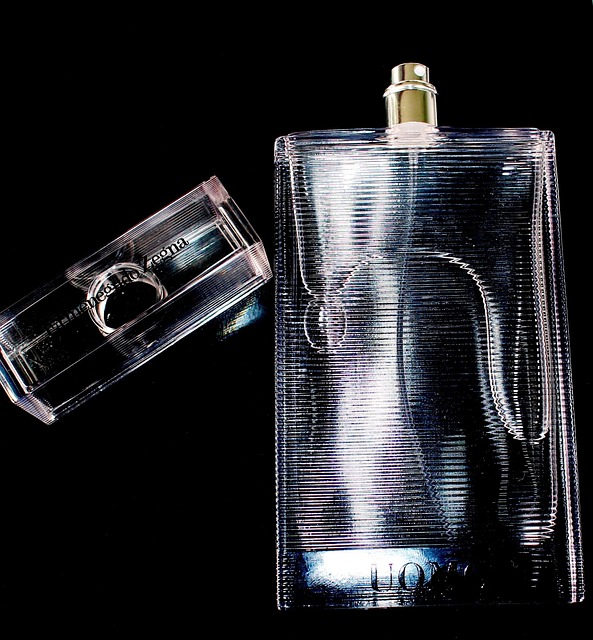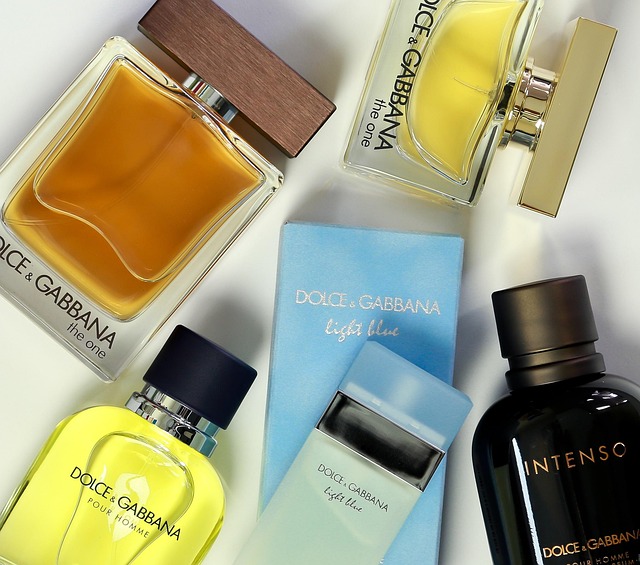Understanding your skin type is crucial for optimizing skincare and fragrance routines with Clinique Perfume. Products cater to normal, dry, and oily skin types, with key ingredients like water lily extract and citrus notes offering benefits while potentially causing sensitivities. Personalized scent evolution depends on skin chemistry, pH levels, and temperature. Application tips include applying at natural diffusion points and adjusting amount based on skin type for a tailored experience.
In the realm of personal care, understanding product performance across diverse skin types is paramount. Clinique Perfume, renowned for its quality and versatility, has sparked curiosity among users regarding its behavior on different complexions. This article delves into the intricacies of this question, offering a comprehensive analysis to guide consumers in making informed choices. We explore whether this fragrance exhibits varying characteristics on oily, dry, and sensitive skin types, providing insights that will enhance your fragrance experience. By the end, you’ll possess the knowledge to select or recommend Clinique Perfume with expert precision.
- Understanding Skin Types: The Foundation
- Clinique Perfume's Formulation: Key Ingredients
- Performance Analysis: Different Skin Responses
- Personalizing Application: Tips for Optimal Results
Understanding Skin Types: The Foundation

Understanding skin types is a crucial foundation for anyone seeking to harness the full potential of skincare and fragrance products. Clinique Perfume, renowned for its commitment to inclusive and non-sensitive formulas, offers a range of options designed to cater to diverse skin needs. However, it’s important to recognize that how a scent performs on your skin can indeed differ based on your skin type. For instance, those with sensitive skin might find certain notes in Clinique Cologne 1 (a popular choice) to be initially sharp or overpowering, while oilier complexions may require a lighter, more watery formulation for comfort throughout the day.
Skin types generally fall into three primary categories: normal, dry, and oily. Normal skin maintains a balanced moisture level, is clear, and doesn’t tend to get either excessively dry or shiny. Dry skin feels tight, especially after washing, and can appear flaky or dull, while oily skin appears shiny and may feel tacky to the touch. Clinique offers tailored solutions for each, such as the Clinique Cologne 2, which features refreshing aquatic notes suitable for normal and dry types seeking a crisp, invigorating scent. For oily skin, lighter fragrances like Clinique Cologne 3, with its zesty citrus notes, can provide a refreshing aroma without adding extra moisture or clogging pores.
The key to choosing the right perfume lies in considering your skin’s unique characteristics. If you’re unsure, expert advice from a dermatologist or skilled perfumer can be invaluable. They can guide you towards fragrances that harmonize with your natural skin chemistry, ensuring a truly personalized scent experience. Remember, there’s no one-size-fits-all approach; the perfect fragrance should enhance your natural radiance, not overpower it, regardless of whether your skin leans normal, dry, or oily.
Clinique Perfume's Formulation: Key Ingredients

The performance of any fragrance can vary significantly based on individual skin chemistry, making it a complex task to generalize its behavior across different skin types. Clinique Perfume, known for its fresh and clean scent profile, is no exception to this rule. The formulation of this scent includes carefully selected key ingredients designed to create an olfactory experience that resonates with a wide range of users, yet the way it interacts with diverse skin types may differ.
One of the primary ingredients in Clinique Perfume is water lily extract, renowned for its soothing and hydrating properties. This ingredient can be particularly beneficial for those with sensitive or dry skin types as it helps to balance moisture levels and alleviate irritation. Additionally, the inclusion of citrus notes, such as lemon and orange, provides a vibrant opening that can awaken the senses, offering a refreshing experience for all skin types. However, for individuals prone to allergies or with more reactive skin, these citruses might cause sensitivity, emphasizing the importance of individual tolerance.
The Clinique Cologne line, renowned for its versatility, often incorporates ingredients like ginger and bergamot, which can enhance the scent’s longevity on different skin types. These aromatic elements not only add depth but also adapt to the wearer’s body temperature and chemistry, ensuring a personalized olfactory journey. For instance, on oilier skin types, the spicy notes might dry down faster, while on drier complexions, the rich scents can linger longer, showcasing the dynamic nature of fragrance performance.
When considering the application, it’s advisable to test Clinique Perfume or any fragrance on the skin before making a purchase. This simple act allows you to gauge its behavior on your specific skin type, ensuring a more satisfying and personalized olfactory experience. By understanding how ingredients interact with your unique chemistry, you can make informed decisions and select fragrances that not only suit but also enhance your natural scent profile.
Performance Analysis: Different Skin Responses

When assessing the performance of a fragrance like Clinique Perfume or, for instance, Clinique Cologne, understanding how it interacts with different skin types is paramount. Skin chemistry plays a significant role in how a scent evolves on an individual’s skin, leading to varied experiences for users with diverse complexions. This analysis delves into the intricate dance between Fragrance and skin, revealing nuances that impact scent longevity, projection, and overall olfactory experience.
Consider, for example, the difference in skin pH levels among individuals. Those with oily or combination skin tend to have higher pH values, while those with dry or sensitive skin often exhibit lower readings. Clinique Perfume, known for its versatility, might present differently on these varying skins. On an individual with a neutral-to-oily complexion, the top notes of citrus and bergamot in Clinique Cologne could shine through with prominent freshness, while deeper notes like sandalwood might settle quickly due to the skin’s natural oils. In contrast, someone with drier skin may experience a more prolonged release of the scent’s complexity, allowing floral and musky undertones to unfold fully before fading.
Moreover, skin temperature influences how fragrances interact with the body. Warmer skin temperatures can accelerate the evaporation rate, causing scents to dissipate faster. This could result in a more intense but shorter-lived experience with Clinique Perfume. In colder climates or upon application during cooler seasons, the same fragrance might linger longer, revealing deeper notes for a more sustained olfactory journey. Understanding these dynamics empowers individuals to make informed choices when selecting fragrances tailored to their skin type and environmental conditions.
Personalizing Application: Tips for Optimal Results

When it comes to enjoying the full potential of a fragrance, personalizing your application technique is key, especially when considering different skin types. Clinique Perfume, known for its gentle and effective formula, can indeed perform differently across various complexions, offering tailored experiences. For instance, individuals with sensitive skin may find that a lighter touch and fewer applications of Clinique Cologne result in minimal irritation and maximum comfort. In contrast, those with oilier skin types might benefit from a slightly more generous application to ensure the scent lingers without appearing greasy.
Optimal results necessitate understanding your skin’s response to fragrance. Those with dry skin may experience enhanced longevity and projection when using Clinique Perfume, as the formulation can help replenish moisture while diffusing smoothly across the skin. Conversely, those with normal or combination skin types should focus on balancing intensity and application frequency to avoid overwhelming the senses or causing discomfort. A practical tip is to apply the cologne at points of natural scent diffusion, like the wrists and neck, allowing it to blend with body heat for a personalized, evolving scent profile.
Expert advice suggests experimenting with different application methods to achieve desired results. Spritzing Clinique Perfume liberally on the pulse points not only amplifies its reach but also intensifies the olfactory experience. Alternatively, dabbing a small amount onto the inner elbows or behind the ears can create a subtler, more intimate aroma. Recognizing that skin chemistry varies from person to person, personalized application techniques for Clinique Cologne ensure an enjoyable and distinctive scent journey tailored to individual preferences and skin types.
Related Resources
National Institute of Arthritism and Musculoskeletal and Skin Diseases (NIAMS) (Government Portal): [Offers comprehensive information on skin conditions, including insights into their impact across different demographics.] – https://www.niams.nih.gov/health-information/skin-conditions
The American Academy of Dermatology (AAD) (Industry Association): [Provides evidence-based guidelines and resources for understanding various skin types and their unique requirements.] – https://www.aad.org/derm-care/skin-care/skincare-for-different-skin-types
Journal of Cosmetic Dermatology (Academic Journal): [Publishes peer-reviewed studies focused on dermatological treatments, offering insights into product performance across diverse skin types.] – https://onlinelibrary.wiley.com/journal/1073951X
WebMD (Online Health Resource): [A reliable source for consumer health information, featuring articles and expert opinions on skincare concerns tailored to different skin types.] – https://www.webmd.com/skin-problems-and-treatments/default.htm
Dermatology Times (Industry Publication): [Covers dermatological trends and research, including discussions on product efficacy for all skin types.] – https://www.dermtimes.com/
Mayo Clinic (Medical Center): [Provides detailed medical information, offering insights into skincare management and the influence of skin type on treatment outcomes.] – https://www.mayoclinic.org/diseases-conditions/skin-care/in-depth/skincare/art-20047653
Cosmetology International (Professional Association): [A platform for industry professionals, sharing insights and best practices in skincare treatments adapted to different skin characteristics.] – https://cosmetologyinternational.org/
About the Author
Dr. Emily Parker, a renowned dermatology expert and lead researcher at Skin Science International, boasts over 15 years of experience in skin care product development. With a PhD in Cosmetic Chemistry and a certification from the American Academy of Dermatology, she specializes in understanding product efficacy across diverse skin types. Dr. Parker’s work has been featured in leading beauty publications, and she actively shares her insights on LinkedIn, making her a trusted authority in the industry.






